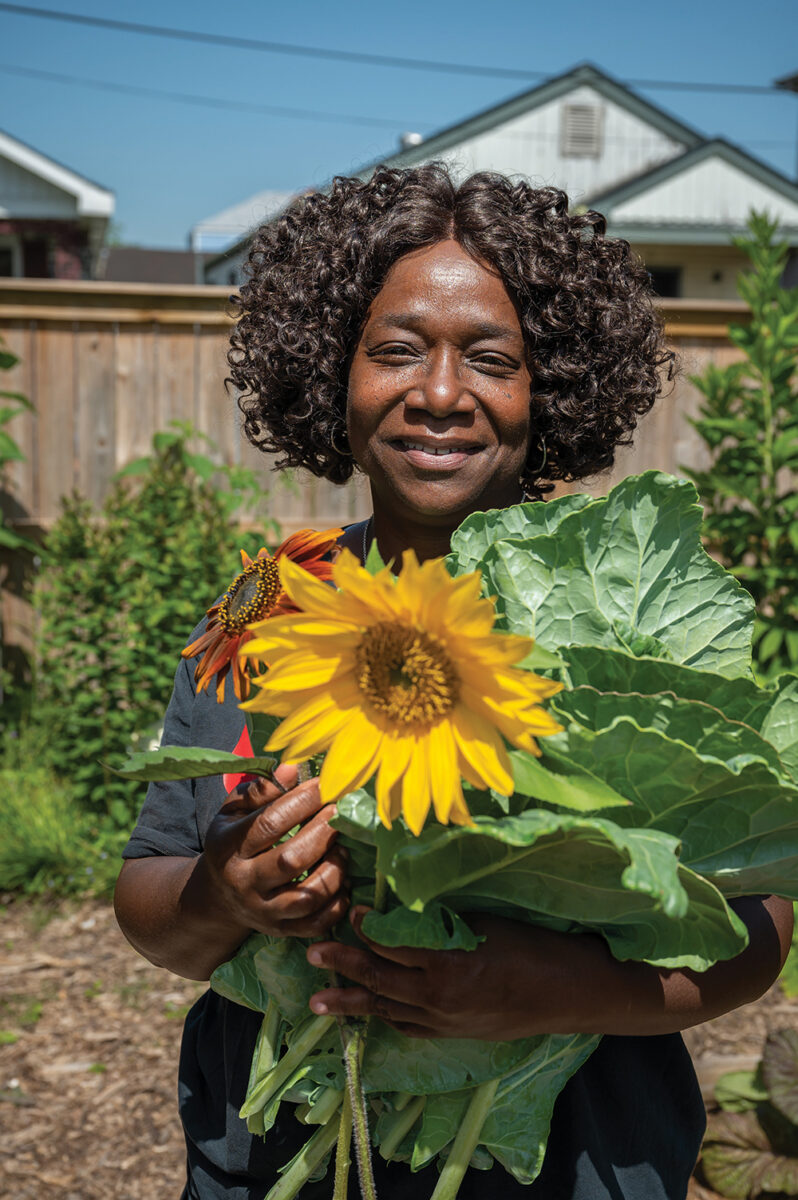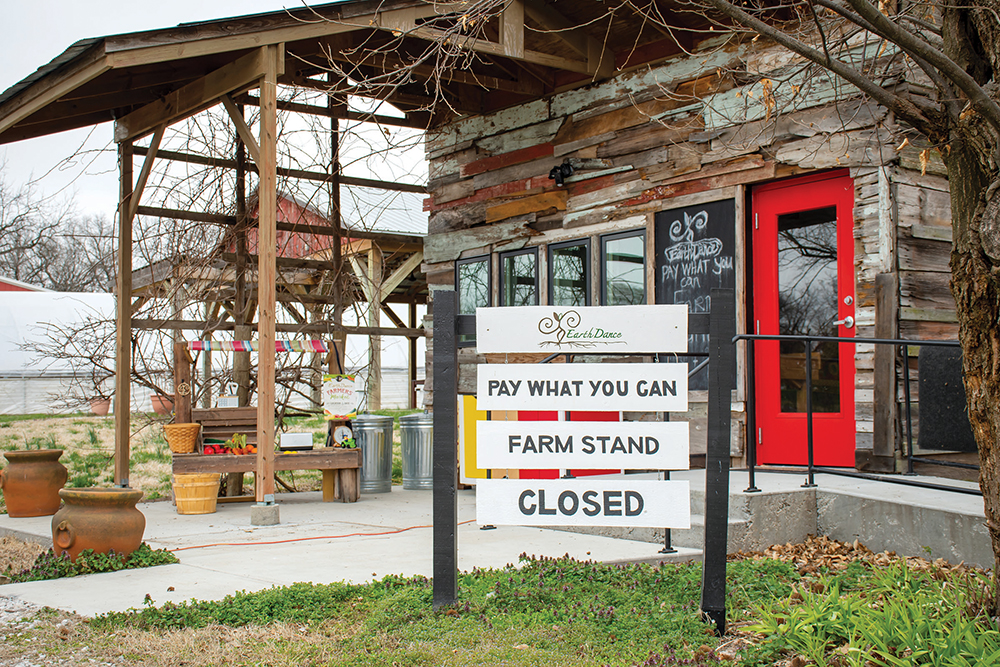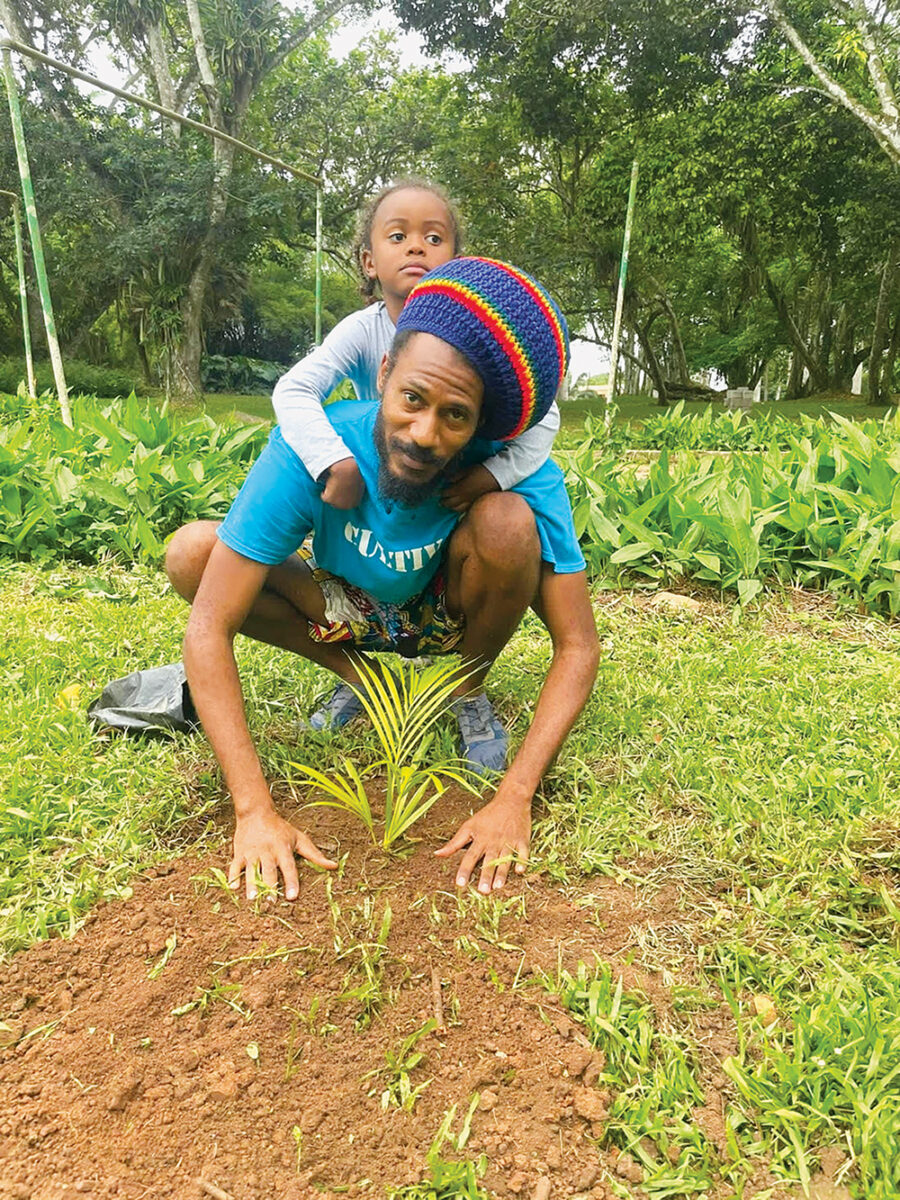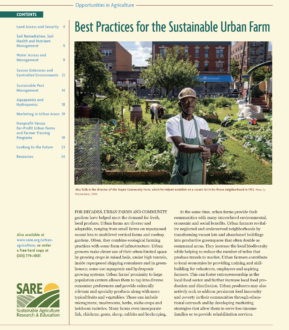The formal business structure of an urban farm influences its business strategies and potential revenue streams. Urban farms are typically established as either for-profit or nonprofit, or they may take a hybrid approach where a part of the farm business is established as a nonprofit organization for charitable purposes. For-profit or commercial urban farms focus primarily on farm production and activities that generate income, including both produce sales and, possibly, agritourism activities like pop-up dinners or U-Pick events. With commercial farms, education and training programs are usually not the focus, but many do find ways to incorporate educational activities into their business model because they can improve marketing and community relations. Some farms, for example, provide farmer training, cooking demonstrations, gardening workshops or internships.

Adam and Melissa Millsap of Urban Roots Farm in Springfield, Mo., for example, have successfully managed their urban farm since 2010. They use natural and sustainable practices to harvest more than 500 pounds of produce a week on their half-acre lot. As a commercial urban farm, they generate income from a variety of different sources such as direct sales through their farm stand and CSA, farm design and consulting services, and hosting special events like weddings and farm-to-table dinners.
Nonprofit community gardens and urban farms, on the other hand, are established with more of a focus on community revitalization by supporting educational development and advocating for social justice and public health. Nonprofits provide community support through education and job training programs. Community urban gardens aim to foster a greater sense of community and to expose residents to agricultural career opportunities. Some nonprofit organizations provide beginning farmers with access to land to gain experience developing an agricultural operation. While nonprofit farms make money from the products grown and sold on the farm, they rely primarily on financial support from public and private donors, and other grants and awards.
Success for both commercial and nonprofit farms depends on being visible: Are residents aware of your operation? Are they curious or inclined to visit your space and support your organization’s values? Urban farm operators need to also be aware of the socioeconomic dynamics between residents in the community and aim to develop and maintain positive community ties. After all, local residents will probably be among your main customers, and how they see your operation can affect its success.
Successful urban operations depend on committed partnerships between other farms, local businesses, nonprofits, policymakers and other organizations that share similar values or goals. These partnerships can help build your farm’s capacity, spread risk, extend your customer base or provide resources such as farm equipment, and they often result in longer-term support for urban agriculture in your city.
Big Muddy Urban Farm, located in Omaha, Neb., is a nonprofit with a mission to promote sustainable agriculture education. They offer a year-long farm training residency program where residents learn aspects of sustainable production while cooperatively managing a farm business. They used a SARE Youth Educator grant (YENC16-101) to develop a collaboration with local youth gardeners, wherein youth learn sustainable growing techniques in small raised beds. They also offer free tool lending to residents interested in managing their own gardens.
Establishing a commercial or nonprofit structure for a farm business is an involved process that requires legal and financial help. SARE provides in-depth information about business structures and how to choose one in the book Farmers’ Guide to Business Structures.
From Grassroots Movements to Green Gentrification
For decades, historically marginalized Black, Indigenous and People of Color who suffered from a lack of equitable access to housing, land, fresh foods and medical care used urban agriculture as a means to beautify and cultivate safe spaces within their cities. Vacant lots and otherwise abandoned properties became places of life: sites to find flowering plants and heirloom and ethnic varieties of vegetables like scotch bonnet peppers, callaloo and bitter melon.
Urban and community gardens continue to be a valuable avenue for residents to build community through the shared effort of beautifying their neighborhood and growing their own food. Especially since the onset of the COVID-19 pandemic, more and more people have developed an interest in gardening and learning how to grow food. By participating in urban farming activities, residents connect with each other by sharing their culture, knowledge and foods. Community gardens and urban farms serve as neighborhood hubs, places for celebration and socializing.
This kind of improvement to once disinvested neighborhoods, however, often has the unintended consequence of causing gentrification. Newly rehabilitated spaces often attract wealthy investors seeking to turn a profit in low-income areas where property values are lower, yet still out of reach for lifelong residents. Further development in these areas leads to increased overall property values and the eventual displacement of lifelong residents in favor of wealthier residents and investors.
As a result, much of the food produced by for-profit urban farms, often faced with tight profit margins, is then marketed toward upscale eateries and farmers markets. Gardens originally intended to create community and provide affordable, healthy food for residents instead become inaccessible to lower-income families. Gentrification perpetuates the systemic displacement of historically marginalized people. Over the past decade, cities like Austin, Texas, and Washington, D.C., have seen rapid redevelopment and displacement of lifelong residents.

Given the impacts that urban farms can have on the communities they are established in, operators of urban farms should consider ways to be inclusive of the established community:
- Be respectful of established communities’ culture and aim to develop genuine relationships with lifelong residents.
- Offer events like farm dinners and cooking demonstrations that create opportunities to engage with the community.
- Consider approaches to make your foods more accessible to lower-income customers, such as accepting Electronic Benefits Transfer (EBT) for the Supplemental Nutrition Assistance Program (SNAP) and the Women, Infants, and Children (WIC) program.
- Participate in community advocacy for marginalized groups on the issues that affect them.
- Hire residents or provide outreach, volunteer and training opportunities to them, including teenagers.
Profile: HABESHA, a Pan-African nonprofit leading the Urban Agriculture Movement in Atlanta and Beyond

Georgia
EDS18-07: HABESHA Works Program Expansion and Incubator Development
Located in the Atlanta metropolitan area, a rapidly developing hub of urban agriculture, the nonprofit HABESHA, Inc. (Helping Africa By Establishing Schools Home and Abroad) provides youth education and leadership training to children, teenagers and young adults each year. In classrooms and on the farm, participants learn to become urban growers through STEM-based programs that emphasize the culture and history of the Pan-African identity, leadership development, and sustainable living. Cashawn Myers led the formation of HABESHA in 2002, wanting to make a positive impact on his community and across the African diaspora. The organization maintains a one-acre garden complex where the staff train participants in sustainable urban growing practices, entrepreneurship and agribusiness development.
HABESHA has grown to include five distinct training programs, including HABESHA Works, which is a green jobs training program that provides certification for aspiring farmers in the principles and practices of sustainable urban agriculture. These include practices like cover cropping, crop rotation, organic pest management and soil management. The 14-week course includes rigorous instruction and training that includes classroom, lab and field training through activities like interactive classroom work, visits to and volunteer work on partnering urban farms, and conference attendance, as well as a final practical project.
In 2018, HABESHA received a Southern SARE grant to increase the availability of the HABESHA Works program to more participants. The staff leveraged their grant into a partnership with two local organizations to establish an urban farm incubator for graduates of the training program. The urban incubator farm provides new producers with access to land and a relatively low-risk environment to gain experience growing crops and developing an agribusiness plan. Myers reported that, because of the grant, 35 participants completed the training and had several opportunities to incorporate outreach and professional development through conferences like Georgia Organics, AgLanta and Black Urban Growers (BUGs).
Recognizing that beginning farmers need support in a wide range of areas if they are to be successful, Myers used a second SARE grant in 2020 to establish the HABESHA Agriculture Leadership Opportunity (HALO) program. This program, meant for intermediate-level growers, consists of a seven-month advanced course meant to refine farmers’ skills in areas like business and financial planning, marketing, leadership and interpersonal communication. Specific topics include developing an Organic System Plan (OSP), succession planning, retail readiness, and accessing USDA funding, among others. Myers says, “It’s one thing to grow food; it's another thing to grow food with intent.”
Some of HABESHA’s biggest impacts are the more than 150 growers currently working in Atlanta and neighboring areas. “Alumni from HABESHA educational programs have seeded the urban agriculture movement in all aspects in Atlanta and abroad,” Myers says. In Ghana, HABESHA recently launched the Kweku Andoh Sustainability Institute (KASI), a research and training institution that provides workshops on a range of sustainable agriculture and eco-holistic practices.
